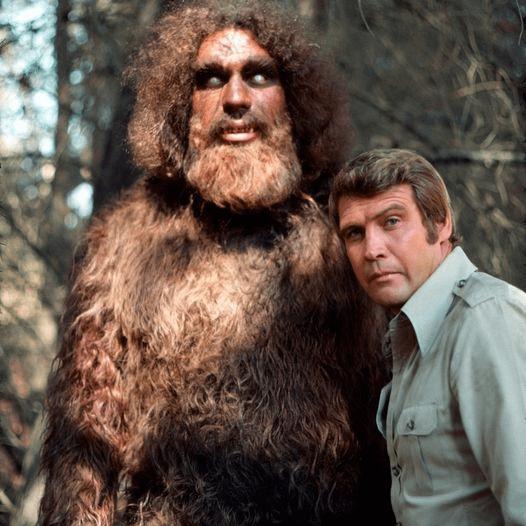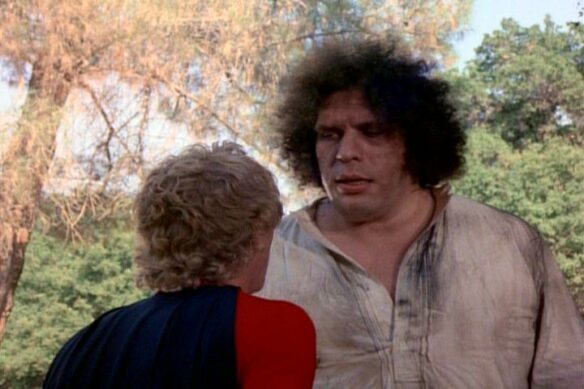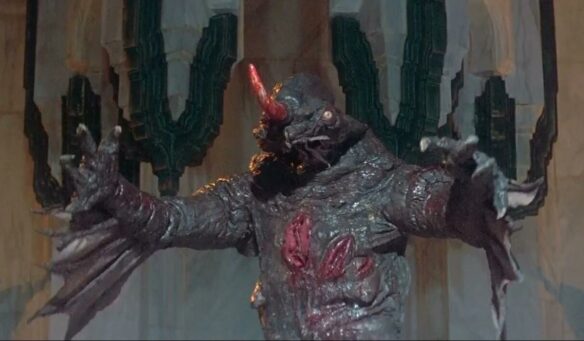(1) SMALL WONDERS IS KICKSTARTING YEAR 2. Cislyn Smith and Stephen Granade have launched a Kickstarter to fund the year two of Small Wonders, a monthly online SFF magazine for flash fiction and poetry.
For the past year, Small Wonders has published original and reprint flash fiction and narrative poetry, all tinged with the wonder of other worlds both science fictional and fantastic. Now the magazine is raising funds to cover Year Two, with an initial goal of $11,000. Stretch goals include publishing a Best of Year One collection, an issue guest edited by Premee Mohamed and Chimedum Ohaegbu, and more. Backers can get discounted yearly subscriptions; a Kickstarter-only mini issue with new works by Nino Cipri, Myna Chang, Jennifer Mace, Avra Margariti, and more; and pins and stickers themed to stories and poems from Year One. The Kickstarter runs through June 3.
Each issue of Small Wonders contains three original pieces of flash fiction, three new poems, and three re-printed flash fiction stories. Issues are published as ebooks (mobi, epub, and pdf) at the first of the month, and subscribers can receive every story and poem in their inboxes as they’re published on the website.
The first year of Small Wonders succeeded beyond Cislyn and Stephen’s expectations. It published new authors and poets as well as familiar names such as John Wiswell, Ali Trotta, Premee Mohamed, and Mary Soon Lee. and included multiple Rhysling-nominated poems. They’re excited to see what year two will bring, and hope you’ll be a part of it through the Kickstarter.

(2) VOTE FOR BEST FRENCH SFF SHORT STORY OF 2022. SFSF Boréal invited readers during the month of March to nominate the best French-speaking sff short stories that were published in 2022 in Canada. The four finalists for the Prix Aurora-Boréal have been announced. Members of SFSF Boréal are invited to vote for the best story at this link. Votes must be cast by June 1. The finalists are:
- Blouin, Geneviève, “La Vie secrète des carapaces” (Solaris 223)
- Côté, Philippe-Aubert, “À l’Ère des Jumeaux errants” (Les Six Brumes)
- Kurtness, J.D., “Bienvenue, Alyson” (Hannenorak)
- Vonarburg, Élisabeth, “Into White”, (Les Six Brumes)
The Congrès Boréal will be held in Montréal, Québec from September 20-22.
(3) THE N-WORD. Wrath James White gives his conclusive answer to using the n-word in dialog: “Make It Make Sense” at Words of Wrath.

I have been asked several times lately about non-Black authors using the n-word when writing character dialog. Because I am, frankly, weary of answering this question, I decided to answer it here, once and for all.
So, here’s my answer. It is appropriate for a White author to put the n-word in a character’s mouth if it isn’t done gratuitously (ala Quinton Tarantino) where the word is just shoehorned in unnecessarily to sound cool or edgy. If the dialog feels natural and non stereotypical. If the characters themselves aren’t one dimensional caricatures and are the type of people who would use the word as part of their everyday vernacular. If it’s the appropriate word to use in the moment and another word wouldn’t work just as well, then by all means do it. Wherever another word would be just as effective, don’t do it.
For example, if your story takes place in the 90s or early oughts, then “dog”, “playa”, “gangsta”, “playboy”, “sistah” and “bruh” would all work just as well in most situations where one Black person is talking to another. Using the n-word in place of these words is a choice and the author should definitely question their motives for making that choice. That is unless you are writing a racist character.
Obviously, it would be absurd to have a racist character avoid using the n-word unless he’s a closeted racist. Still, even a racist doesn’t use the word in every sentence, and might even use other more creative pejoratives. And, most racists are not blatant in their racism….
…The bottom line, I can’t grant you a pass to use the n-word. Nothing I have said above will guarantee that you won’t get the taste slapped out of your mouth for including it in yourwriting. But, if you do find it necessary to use it, just like I said in a previous article about grossout and gore, make it make sense. Make it feel natural and not like a teenager or adolescent trying to shock their parents. If you don’t think you can pull that off, use another word.
(4) LEFT BEHIND? “Some fight change, while others adapt. It’s a Toy Story sort of deal,” says Ronald Kelly in “Woody, Buzz, & the Changing of the Guard” at Fear County Chronicle.
Lately, I’ve been thinking about my place in an ever-growing, ever-changing horror genre. How it once was, how it is now, and if Ol’ Ron has the willpower and stamina to hang in there and keep up the pace with all the new and wildly talented authors who are flooding a market that was once relatively small and limited, both in ranks and growth. I’ve also been thinking a lot about the Pixar movie Toy Story….
You see, I’m Woody. Most of us veteran horror authors are. Woody is old-fashioned, leery of change, and a little hesitant to hand over the reins to anyone else because he likes the position he’s held for so long (Andy’s favorite and the leader of the toys). Deep down inside, he believes that he deserves to retain that position, perhaps indefinitely. Could be that he was pretty special and popular in the past, along with some of his peers (Woody’s Roundup stars Jessie, Bullseye, and even Stinky Pete in Toy Story 2). Woody likes how it is in Andy’s Room because it’s familiar, comfortable, and safe. He feels like he’s the head honcho there… not necessarily giving the orders but holding some measure of respect and authority among those around him. Even the mouthy and cantankerous Mister Potato Head looks to him for stability and guidance….
…Truthfully, very few veteran writers feel contempt and suspicion toward the swell of new storytellers bursting on the scene, but unfortunately some do. They feel challenged by progress and diversity and aren’t receptive to those who want a piece of the action. They also don’t approve of how the rules have changed, and how the dynamic of the writing world is evolving at a rapid pace. The mere thought of the Changing of the Guard horrifies them. We’ve seen it happen in social media in the past few years; an old-dog author bristles at the sudden influx of new talent in the genre and cries foul, sometimes in very volatile and unflattering ways. Some have even gone as far as losing all respect in the genre they helped trailblaze and end up being cast from the ranks for their nearsightedness, prejudice, and insolence….
(5) IN THE BEGINNING. “A Closer Look At Great Animated Title Sequences” at CartoonBrew.
In honor of Saul Bass’s birthday this month, we’re taking a look at some of the greatest animated title sequences from live-action movies (the topic of great credits sequences in animated movies is a subject for another time)….
… As Walt Disney suggested above, opening credits in the early days of movies tended to be straightforwardly informational, often created quickly by in-house art departments superimposing text over static background paintings. Even so, there are a handful of movies from the 1930s and ’40s that contain brief bits of animation during the credits. One great example is the cartoon opening of Abbott and Costello Meet Frankenstein (1948). This scene is frequently attributed to Walter Lantz, but was actually directed by Dave Fleischer….
… Maybe the all-time classic title sequence comes from The Pink Panther (1963), by DePatie-Freleng Enterprises, which not only introduced a cartoon star but also introduced one of the best movie themes ever composed (by Henry Mancini). Looney Tunes director Friz Freleng supervised the sequence, while Freleng’s longtime layout artist Hawley Pratt designed the panther and Ken Harris primarily animated him. Producer David DePatie remembered the movie’s premiere: “The memories of that night will remain with me forever. The projector started to roll and as the Panther first appeared there was a ripple of laughter from the audience which quickly became whistles and roars of approval as the Panther toyed with the various titles. At the conclusion of the main title, the crowd went bananas.”…
(6) REESE WITHERSPOON, LITERARY TASTEMAKER. “When her career hit a wall, the Oscar-winning actor built a ladder made of books — for herself, and for others.” Link bypasses Paywall, courtesy Brad Verter: “Inside Reese Witherspoon’s Literary Empire”
…First and foremost, she wants books by women, with women at the center of the action who save themselves. “Because that’s what women do,” she said. “No one’s coming to save us.”
Witherspoon, 48, has now been a presence in the book world for a decade. Her productions of novels like “Big Little Lies,” “Little Fires Everywhere” and “The Last Thing He Told Me” are foundations of the binge-watching canon. Her book club picks reliably land on the best-seller list for weeks, months or, in the case of “Where the Crawdads Sing,” years. In 2023, print sales for the club’s selections outpaced those of Oprah’s Book Club and Read With Jenna, according to Circana Bookscan, adding up to 2.3 million copies sold.
So how did an actor who dropped out of college (fine, Stanford) become one of the most influential people in an industry known for being intractable and slightly tweedy?
It started with Witherspoon’s frustration over the film industry’s skimpy representation of women onscreen — especially seasoned, strong, smart, brave, mysterious, complicated and, yes, dangerous women…
(7) PUBLIC FROCKING. Attention 18th-century re-enactors! “You Can’t Live in the Past, Even in a Period-Accurate Frock” contends the New York Times, although they know where you can get one.
In 2012, not long after he decided to dedicate his professional life to 18th-century wares, Casey Samson spent a weekend at a colonial-era fair in Bardstown, Ky., selling leather mugs out of a tent.
On his first night there, Mr. Samson sat alone by a crackling campfire, smelled the wood smoke and felt as if he had been transported to a different time. He knew then, he said, that he had made the right choice.
Today, Mr. Samson and his wife, Abbie, own and operate Samson Historical, a three-story business that doubles as a pseudo-museum on the downtown square in Lebanon, Ind., about 30 miles northwest of Indianapolis.
On a recent morning, Mr. Samson, 32, walked into a small warehouse tucked behind the retail space and waxed poetic about the shop’s “great wall of waistcoats.” But there was more: “These are original sugar dippers.” And: “One of Abbie’s passions is clay pipes.” And: “All right, so: gun flints.”
There were breeches and bonnets, frocks and cloaks, candles and lanterns, hip kidneys (for extra support) and bum rolls (for that perfect silhouette). And while Samson Historical has 10 full-time employees and manufactures its own merchandise, it also works with about 40 artisans from trades that are teetering on the edge of extinction: blacksmiths, woodworkers, glass blowers, horners. A fifth-generation pipe maker from Germany handcrafts the store’s pipes.
“A lot of what we do,” Mr. Samson said, “is trying to help keep these things alive.”…
(8) MAYBE YOU WONDERED. “How the ‘B Movie’ Got Its Name” at MSN.com.
When the legendary filmmaker Roger Corman died on May 9 at the age of 98, obituaries dubbed him “the King of the B Movies”—or, even more snappily, “King of the B’s.” He earned that sobriquet by churning out hundreds of low-budget productions, often sensationalistic “exploitation films” or genre fare like horror or science fiction….
In the silent era, motion picture studios began using a tiered approach to categorize productions. When Adolph Zukor founded his Famous Players film company in 1912, he used a three-way classification. As Gerald Mast recounted in his 1971 book “A Short History Of The Movies,” Zukor initially divided his pictures into “Class A (with stage stars and stage properties, the artsy films); Class B (with established screen players); and Class C (cheap, quick features).” Mary Pickford started as a “B” actress in 1914, but her movies quickly proved more popular than Zukor’s “Class A” productions.
A two-tiered system with “Class A” and “Class B” films became the industry standard, catching on during the Great Depression when the “double feature” offered two-for-one pricing to attract customers. The main feature would have the prestigious stars and high production values, while the “B” feature would be an inexpensive, quickly produced genre film like a Western. Studios set up “B units” to produce second features, and the slapdash “B movies” were aptly nicknamed “quickies” or “cheapies.”…
(9) TODAY’S BIRTHDAY.
[Written by Paul Weimer.]
Born May 19, 1946 — André the Giant. (Died 1993.) This Birthday for André René Roussimoffwho performed as André the Giant came about because (a) I really, really like The Princess Bride film and have seen it way too many times, and (b) I thought that he was charming in it as Fezzik. That said, I knew nothing about him and all his other performances, or his life story, at all.
He was a French professional wrestler of impressive height, seven feet and four inches to be precise. He would wrestle his entire life right up until he died at age forty-six of congestive heart failure after an apparent heart attack in his sleep in the Paris hotel he was staying at in order to attend his father’s funeral. It was likely associated with his untreated acromegaly which had been diagnosed some twenty-five years earlier.
His first genre role was being Bigfoot on The Six Million Dollar Man on “The Secret of Bigfoot, Part 1” and “The Secret of Bigfoot Part 2”. Naturally I’m giving you a photo of him in that role.

Next up is being the Monster in “Heaven Is in Your Genes” on Greatest American Hero. Monster, just Monster? So, what did he look like there? Ahhh…. They apparently didn’t a budget for creating a monster which explains the generic name. I’m giving you a photo anyway so you can see what he looked like sans makeup.

He got to be in a film with Arnold Schwarzenegger, Conan the Destroyer. He played Dagoth the Dreaming God, the main antagonist of Conan. For some reason, he was uncredited. Considering what he looks like in the film, it was easy for him to go uncredited.

And that brings us to his best and last genre role, that of Fezzik, the giant in The Princess Bride. He’s played as Goldman describes him in his novel, “Fezzik. The timid, large-hearted and obedient giant who accompanies Vizzini. Fezzik loves rhymes and his friend Inigo, and he is excellent at lifting heavy things.”
Not a long career, but an interesting one I’d say.
(10) COMICS SECTION.
- Saturday Morning Breakfast Cereal discusses computers and hands.
- Thatababy – can you name all the robots?
- Wallace the Brave’s Spud ponders an unwanted superhero.
- Carpe Diem changes a company name – apparently it’s been frighteningly successful.
- Macanudo has a problem with an incantation.
Tom Gauld shared his latest:
(11) SAURON TURNS HIS EYE TO YOUR WALLET. [Item by Mike Kennedy.] Palantír viewing room included. Hopefully without a working Palantír just in case Melkor find a way to open the Door of Night. I mean, if you thought Sauron was bad news, you sure don’t want to deal with the OG baddy. “$460, 5,471-piece Lego Barad-dûr set comes for LOTR fans’ wallets in June” at Ars Technica. (See the set in detail at the LEGO® Icons website.)
…Sauron, Base Master of Treachery, will keep his Eye on you from atop the tower, which will actually glow thanks to a built-in light brick. The tower includes a minifig of Sauron himself, plus the Mouth of Sauron, Gollum, and a handful of Orcs.
The Lego Barad-dûr set will launch on June 1 for Lego Insiders and June 4 for everybody else. If you buy it between June 1 and June 7, you’ll also get the “Fell Beast” bonus set, with pose-able wings and a Nazgûl minifig. It doesn’t seem as though this bonus set will be sold separately, making it much harder to buy the nine Nazgûl you would need to make your collection story-accurate….


(12) SPACE AT LAST. “90-year-old Ed Dwight, 5 others blast into space aboard Blue Origin rocket” – NPR has the story. (This was Blue Origin’s 25th mission to space. The New Shepard Mission NS-25 Webcast replay is on YouTube.)
Ed Dwight, the man who six decades ago nearly became America’s first Black astronaut, made his first trip into space at age 90 on Sunday along with five crewmates aboard Blue Origin’s New Shepard rocket.
The flawless liftoff from a West Texas launch site marked the first passenger flight in nearly two years for the commercial space venture run by billionaire Jeff Bezos. The approximately 10-minute suborbital flight put Dwight in the history books as the oldest person ever to reach space. He beat out Star Trek actor William Shatner for that honor by just a few months. Shatner was a few months younger when he went up on a New Shepard rocket in 2021.
(13) INDIA’S NEXT MARS MISSION. Space.com says “India’s ambitious 2nd Mars mission to include a rover, helicopter, sky crane and a supersonic parachute”.
India is preparing to launch a family of seemingly sci-fi robots to Mars, perhaps as soon as late 2024.
The Mars Orbiter Mission-2 (MOM-2), or Mangalyaan-2 (Hindi for “Mars Craft”), is set to include a rover and a helicopter, like a robotic NASA duo already on Mars — the Perseverance rover and now-grounded Ingenuity. A supersonic parachute and a sky crane that will lower the rover onto the Martian surface will also be part of Mangalyaan-2, Indian Space Research Organisation (ISRO) officials said last week during a presentation at the Space Applications Centre in Gujarat, India Today reported….
…Media reports from late last year suggest that Mangalyaan-2 will have at least four science instruments designed to study the early history of Mars, analyze its leaking atmosphere, and look for a hypothesized dust ring around the planet generated by its two moons, Phobos and Deimos….
(14) SPEEDING UP TRAVEL TO MARS. “NASA-funded pulsed plasma rocket concept aims to send astronauts to Mars in 2 months” reports Space.com.
An innovative rocket system could revolutionize future deep space missions to Mars, reducing travel time to the Red Planet to just a few months.
The goal of landing humans on Mars has presented a myriad of challenges, including the need to quickly transport large payloads to and from the distant planet, which, depending on the positions of Earth and Mars, would take almost two years for a round trip using current propulsion technology.The Pulsed Plasma Rocket (PPR), under development by Howe Industries, is a propulsion system designed to be far more efficient than current methods of deep space propulsion, enabling the trip between Earth and the Red Planet to be made in just two months. Specifically, the rocket will have a high specific impulse or Isp, a measure of how efficiently an engine generates thrust. This technology could therefore enable astronauts and cargo to travel to and from Mars more efficiently and rapidly than existing spacecraft, according to a statement from NASA…
(15) THE FINEST SUPERNATURAL TALE IN ENGLISH LITERATURE? [Item by SF Concatenation’s Jonathan Cowie.] Moid Moidelhoff over at the Media Death Cult YouTube Channel invites us to consider Algernon Blackwood’s 1907 novelette, ‘The Willows’, as a contender for the grand chief fountainhead of the insidious order. It did though inspire the likes of H. P. Lovecraft. You don’t have to buy in to the pronunciation of Danube as ‘dan-noob’ but it is the Moidelhoff way…
[Thanks to Cat Eldridge, SF Concatenation’s Jonathan Cowie, Steven French, Daniel Dern, Teddy Harvia, Kathy Sullivan, Mike Kennedy, Andrew Porter, John King Tarpinian, and Chris Barkley for some of these stories. Title credit belongs to File 770 contributing editor of the day Jim Janney.]
